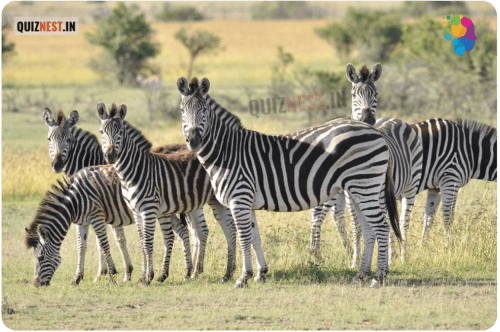Life of a Zebra in wild forest | Zebra Facts
Life of a Zebra in wild forest | Zebra Facts
Some interesting information about Zebra:

Female zebras, or mares, usually remain in their natal herd or join another harem. Mares are the primary caregivers for their young, teaching them how to find food and water and how to stay safe from predators. Herds are very social, and zebras rely on group cohesion and communication to protect themselves from threats.
Different species of zebras, such as the plains zebra, Grevy's zebra, and mountain zebra, have varying conservation statuses, with some species being more vulnerable to extinction than others. Efforts to conserve zebras involve both in-situ (within natural habitats) and ex-situ (such as in zoos and breeding programs) strategies.
More Tidbits about Zebra:
Lifespan of Zebra:
Zebras typically live around 20 to 25 years in the wild. In captivity, with protection from predators and access to veterinary care, they can live up to 30 years or more.Early Life of Zebra:
Zebra foals are born after a gestation period of approximately 12 to 14 months. A newborn foal can stand and run within an hour of birth, which is crucial for avoiding predators. They are usually able to keep up with the herd shortly after birth. Foals are nursed by their mothers for up to a year, although they start grazing on grass within a few weeks. The strong bond between a mother and her foal is essential for the foal's survival in the wild.Adolescence of Zebra:
Young zebras stay close to their mothers and the herd, learning essential survival skills such as finding food and water, recognizing predators, and understanding the social dynamics of the herd. Adolescent zebras engage in playful activities that help them develop their strength and social skills. By the age of one, they are more independent but still rely on the protection of the herd.
Adult Life of Zebra:
As zebras mature, they begin to take on more defined roles within the herd. Adult male zebras, known as stallions, may leave their natal herd to form bachelor groups or challenge other stallions for control of a harem. A harem typically consists of one stallion, several mares (female zebras), and their offspring. The stallion's role is to protect the herd from predators and rival males.Female zebras, or mares, usually remain in their natal herd or join another harem. Mares are the primary caregivers for their young, teaching them how to find food and water and how to stay safe from predators. Herds are very social, and zebras rely on group cohesion and communication to protect themselves from threats.
Diet and Habitat of Zebra:
Zebras are herbivores and primarily graze on grasses. They can also eat leaves, bark, and shrubs when grass is scarce. Zebras have adapted to live in a variety of habitats, including savannas, grasslands, and open woodlands. They require large areas to roam and graze, which makes them vulnerable to habitat loss due to human activities such as agriculture and development.Social Behavior of Zebra:
Zebras are social animals that depend on the herd for protection and support. They communicate through a range of vocalizations, including barking, braying, and snorting, as well as through body language and facial expressions. Strong social bonds are essential for the stability and safety of the herd, and zebras often groom each other to strengthen these bonds.Threats and Conservation of Zebra:
In the wild, zebras face threats from predators such as lions, hyenas, and wild dogs. However, their most significant threats come from habitat loss, human-wildlife conflict, and poaching. Conservation efforts are focused on protecting natural habitats, establishing protected areas, and reducing human-wildlife conflict to ensure the survival of zebra populations.Different species of zebras, such as the plains zebra, Grevy's zebra, and mountain zebra, have varying conservation statuses, with some species being more vulnerable to extinction than others. Efforts to conserve zebras involve both in-situ (within natural habitats) and ex-situ (such as in zoos and breeding programs) strategies.
More Tidbits about Zebra:
- Unique Stripe Patterns: No two zebras have the same stripe pattern. Each zebra's stripes are as unique as human fingerprints, making it possible to identify individual zebras by their stripe patterns. Scientists believe these stripes may help with camouflage, social bonding, and deterring biting insects.
- Social Structure: Zebras are highly social animals and live in groups called harems. A harem typically consists of one male (stallion), several females (mares), and their offspring. These groups are stable and can stay together for years. In addition to harems, zebras can also form larger herds during migration or when they gather around water sources.
- Communication: Zebras use a variety of vocalizations and body language to communicate with each other. They bray, bark, snort, and make high-pitched squeals to signal different emotions or warnings. Ear positioning, tail movements, and facial expressions are also important for communication within the herd. For example, ears pinned back can indicate aggression or irritation.

 |
Watch more about Zebra on YouTube |

